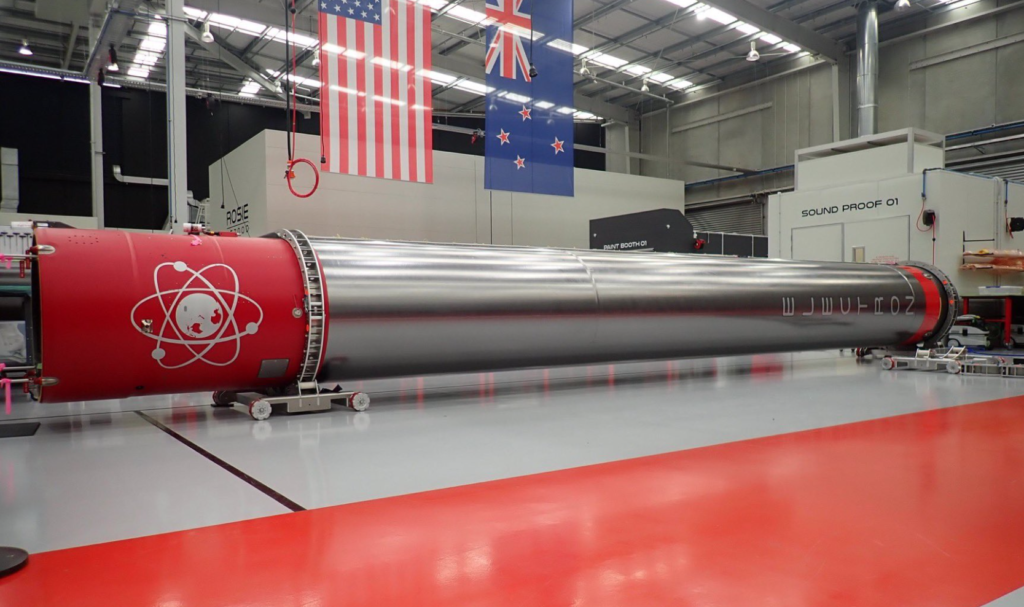
Exactly How Rocket Lab Plans To Catch Electron’s Booster On The Next Mission
Throughout the space industry, we are seeing more companies work towards unique and ambitious ideas. While risky, they provide many benefits if successful including lower costs, faster launches, and much more. Over the past few years, Rocket Lab has been practicing catching Electron’s booster. However, none of these attempts have been done during an official launch.
This is set to change less than a week from now on April 22nd. The There and Back Again mission will see Electron take off with multiple rideshare payloads followed by the first official booster catch attempt. The results of this mission will have a big impact on not only the future of Electron operations but Rocket Lab’s plans and opportunities for the future.
However, in order to catch a rocket booster out of mid-air, there are a lot of complex steps that need to go right. This includes the timing, speed, helicopter, parachutes, and much more. Along with a recent mission update, Rocket Lab provided a detailed guide to the upcoming launch. Here I will go more in-depth into each aspect of this mission and what to expect in less than a week from now.
Mission Overview

Not long ago Rocket Lab announced that on the next Electron launch, they were planning the first booster catch attempt during an actual mission. More recently, the company provided more information on the launch date and what to expect. Specifically, on April 13th, Rocket Lab tweeted saying, “With final capture rehearsals in full swing, we’re counting down to the launch window for #ThereAndBackAgain. Due to severe weather over LC-1 in the coming days, we’re targeting no earlier than April 22 UTC for lift-off.” In addition to this tweet, Rocket Lab gave a lot of details regarding the mission and catch attempt.
In terms of the launch, the “There And Back Again” mission will see Electron deploy 34 satellites to a sun synchronous orbit for a variety of customers including Alba Orbital, Astrix Astronautics, Aurora Propulsion Technologies, E-Space, Spaceflight Inc., and Unseenlabs, bringing the total number of satellites launched by Electron to 146. “There And Back Again” is also a recovery mission where, for the first time, Rocket Lab will attempt a midair capture of Electron’s first stage as it returns from space using parachutes and a helicopter. Like previous recovery missions, Electron’s first stage will undertake a series of complex maneuvers designed to enable it to survive the extreme heat and forces of atmospheric re-entry. Electron will be equipped with a heat shield to help protect the stage’s nine Rutherford engines and a parachute to slow Electron down in order for Rocket Lab’s customized Sikorsky S-92 helicopter to catch the stage as it returns. Unlike previous recovery missions, “There And Back Again” is attempting to avoid an ocean splashdown. After catching the stage mid-air, the helicopter will return to the stage back to land. Upon success of this recovery, Electron will be one step closer to being the first reusable orbital small sat launcher.
“We’re excited to enter this next phase of the Electron recovery program,” said Rocket Lab founder and CEO, Peter Beck. “We’ve conducted many successful helicopter captures with replica stages, carried out extensive parachute tests, and successfully recovered Electron’s first stage from the ocean during our 16th, 20th, and 22nd missions. Now it’s time to put it all together for the first time and pluck Electron from the skies. Trying to catch a rocket as it falls back to Earth is no easy feat, we’re absolutely threading the needle here, but pushing the limits with such complex operations is in our DNA. We expect to learn a tremendous amount from the mission as we work toward the ultimate goal of making Electron the first reusable orbital small sat launcher and providing our customers with even more launch availability.” If successful, this mission will mark a major milestone for the company, and likely change how Electron is used and launched in the future.
Catching Electron’s Booster

Now that we know more about the mission and payloads on board, we can take a closer look at the helicopter and the procedures in place to try and catch Electron’s booster. As mentioned prior, the recovery helicopter for this mission is the Sikorsky S-92. This helicopter is 20.8 meters long, 5.47 meters wide, and features a max takeoff weight of around 13,000 kilograms. In addition, it has a range of 950 kilometers, a top speed of 306 kilometers an hour, and uses two turboshaft engines that produce nearly 2,000 KW each. This unique helicopter has the size and power in order to catch up to Electron’s booster and precisely catch and return the first stage.
Rocket Lab also provides a mission profile that gives an accurate description of the upcoming mission. Approximately an hour prior to lift-off, Rocket Lab’s helicopter will move into position in the capture zone, approximately 150 nautical miles off New Zealand’s coast, to await launch. Next, at about two and a half minutes after lift-off, Electron’s first and second stages will separate per a standard mission profile. Electron’s second stage will continue on to orbit for payload deployment and Electron’s first stage will begin its descent back to Earth reaching speeds of almost 8,300 km (5,150 miles) per hour. The stage will reach temperatures of around 2,400 degrees C (4,352 F) during its descent. After deploying a drogue parachute at 13 km (8.3 miles) altitude (about seven and a half minutes after lift-off), the main parachute will be extracted at around 6 km (3.7 miles) altitude to dramatically slow the stage to 10 meters per second, or 36 km (22.3 miles) per hour (about eight minutes and 12 seconds after lift-off). As the stage enters the capture zone, Rocket Lab’s helicopter will attempt to rendezvous with the returning stage and capture the parachute line via a hook. Lastly, once the stage is captured and secured, the helicopter will transport it back to land where Rocket Lab will conduct a thorough analysis of the stage and assess its suitability for reflight. This is by no means an easy task, but Rocket Lab has practiced multiple times before and is confident in the upcoming attempt.
Looking at practice and past attempts, Rocket Lab has carried out many mid-air capture tests. These are conducted by dropping an Electron first stage test article from a helicopter, deploying the stage’s parachute, and then catching the stage as it descends using a specially designed grappling hook to snag the parachute’s drogue line. Not only this, but the company has also worked to recover Electron’s first stage from the ocean on multiple missions. The purpose of this is to work towards reusability and improve the cost as well as turnaround time. For example in 2019, the ‘Running Out Of Fingers’ mission featured the first guided, full telemetry re-entry of the Electron first stage as part of the recovery program. Recovery instrumentation on-board this flight included guidance and navigation hardware, including S-band telemetry and on-board flight computer systems, to live-gather data during the first stage’s atmospheric re-entry, as well as a reaction control system to orient the booster. Not long after in 2020 and 2021, Rocket Lab worked to recover the booster from the ocean in two additional missions. While in these cases the booster was not caught out of mid-air, it provided invaluable information and practice for the attempt we are expecting to see only days from now.
Rocket Lab points out that as the second-most frequently launched U.S. rocket, Electron has become a workhorse relied upon by the global small satellite industry. Its recovery program aims to make Electron the first reusable small launch vehicle to enable even more frequent launch opportunities for the small sat community. With this mission, for the first time, they are taking the next major step by attempting to capture Electron’s first stage mid-air as it returns to Earth. They highlight that catching a returning rocket stage mid-air as it returns from space is a highly complex operation that demands extreme precision. Several critical milestones must align perfectly to ensure a successful capture. However, with this being said, Rocket Lab has managed to do the impossible and turn Electron into one of the most frequently launched rockets in the industry. While the upcoming mission is risky and complex, Rocket Lab has a great chance of success.
Conclusion
After years of launching Electron, Rocket Lab is only days away from the first ever official mission booster catch attempt. Throughout the space industry more and more companies are making the shift towards either partial or full reusability. This has to do with the large list of benefits including cost and especially turnaround time. Rocket Lab is no exception and has been practicing and preparing for many months now. With an expected launch less than a week away on April 22nd, we will have to wait and see how it progresses and the impact it has on the space industry.
